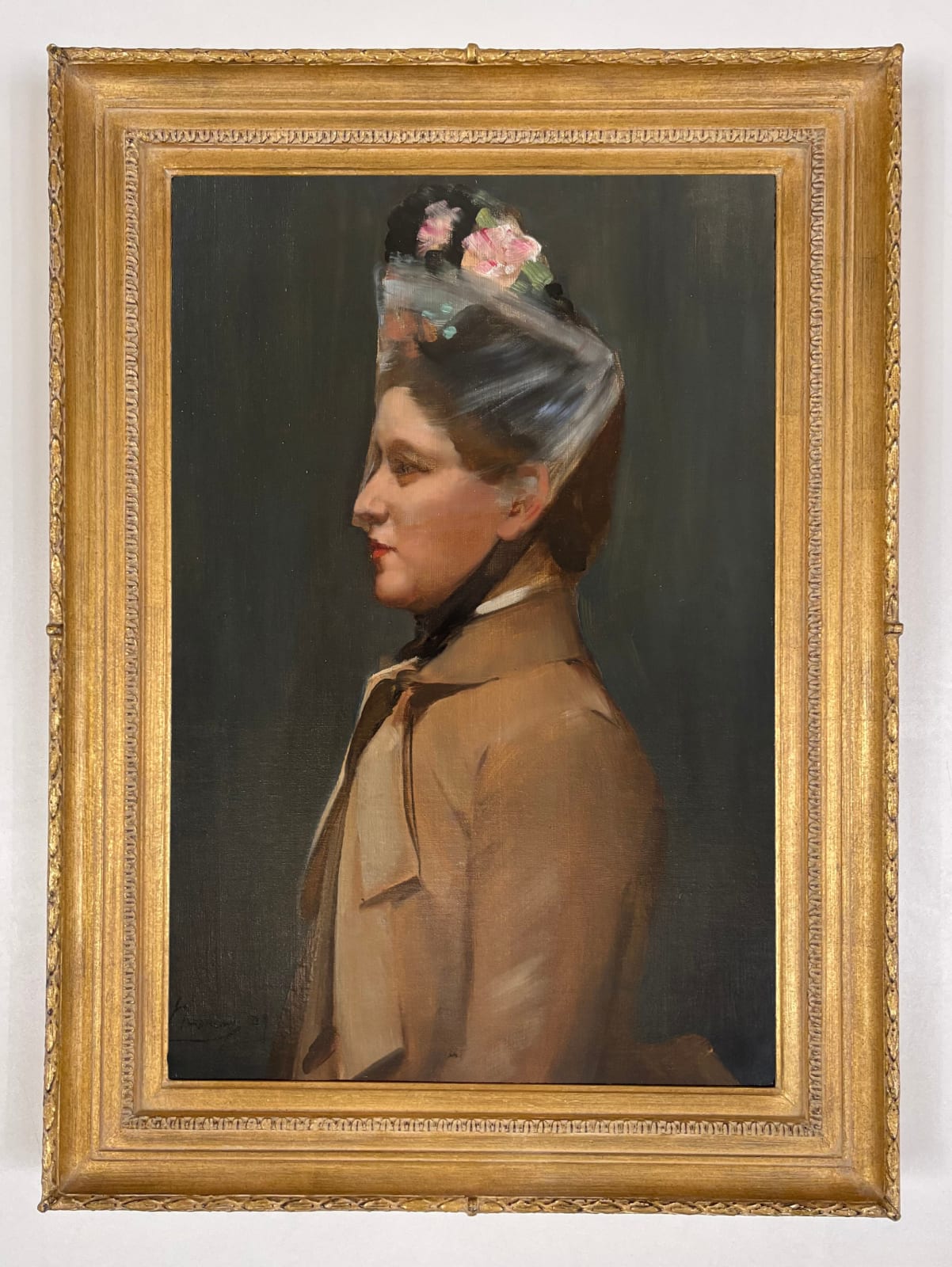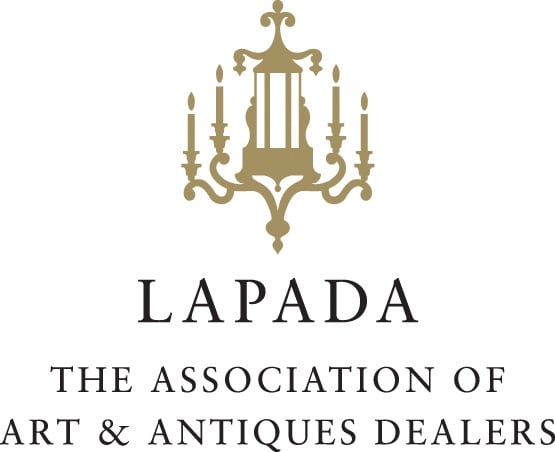John Lavery 1856-1941
Framed: 74 x 55 cm.; 29 x 21½ in.
By the end of 1888, John Lavery had been contracted by Glasgow city council to produce a large memorial canvas portraying the State Visit of Queen Victoria to its International Exhibition (Glasgow Museums). The task, which necessitated depicting a gathering of 253 guests, with visits to London, Windsor and Darmstadt to paint members of the royal household, was daunting. It consumed the next two years of the artist’s life, requiring a move to a larger studio at West George Street, with most of the preliminary portrait sketches being painted in 1889 (Kenneth McConkey, John Lavery, A Painter and his World, 2010, Edinburgh, p.40-48).
It may seem surprising that during the busiest year of his life, Lavery should have taken on other commissions, but such was his reputation as a Salon medallist that he was in great demand. The portrait of Miss Kate Gentles, larger and more finished than the numerous International sketches, may however, have been produced as a special favour to Glasgow merchants whose shop the artist frequented. (A surviving diary for the following year indicates that Lavery’s purchases at Gentles & Co on 6 March 1890 came to seventeen shillings.) This was Gentles & Co, wallpaper, brush, mouldings and frame manufacturers of 336 Sauchiehall Street. The shop’s proprietor, Thomas Gentles, was a supporter of the Scottish Artists’ Benevolent Association and attendee of its costume ball in November 1889 for which Lavery painted quick sketches of the participants. Not only would Gentles and his sons, William and Thomas, now running the family firm with their father, have known about the royal commission, Thomas senior would also have had the opportunity to see the painter in action, and the caché of association with such an important young artist was clearly desirable. Further research will reveal the relationship between Miss Gentles and Gentles clan. It is probable that the present portrait represents Katherine McCallum Gentles, who would have been in her late twenties in 1889.
As she entered the studio, Miss Gentles was wearing a buff tailored coat with lappets in the style of an officer’s dress uniform, after the fashion of the day. Observed in profile, her black pill-box hat and pink corsage was wrapped in a fine gauze veil that extended to under her nose. A similar motif – a face seen through a veil – had been adopted for HRH Princess Alix of Hesse (Private Collection), a celebrated portrait that was quickly framed after Lavery’s return from Darmstadt and shown at the Grosvenor Gallery earlier in the year. (HRH Princess Alix of Hesse was the future Czarina murdered by the Bolsheviks). The artist was fascinated by this partial softening of the young woman’s features – rendered with consummate skill in the Gentles portrait. The sitter’s suave distinction thus paved the way for a cavalcade of portrait studies in the early 1890s such as La Zibeline 1892 and The Invisible Veil 1894 (Private Collections), both likely to have been shown in Thomas Lawrie’s ‘Fair Women’ exhibitions. These marked out the territory of a painter who, avoiding pretty ball gowns and extravagant coiffure, presents a radically unsentimental rendering of the modern woman.
Kenneth McConkey
Provenance
Christie's, Scotland, 9 December 1993, lot 413Private Collection
Whyte's, Dublin, 14 March 2011, lot 106
Private Collection (purchased from the above)
Join our mailing list
Be the first to hear about our upcoming exhibitions, events and news
* denotes required fields
We will process the personal data you have supplied to communicate with you in accordance with our Privacy Policy. You can unsubscribe or change your preferences at any time by clicking the link in our emails.




